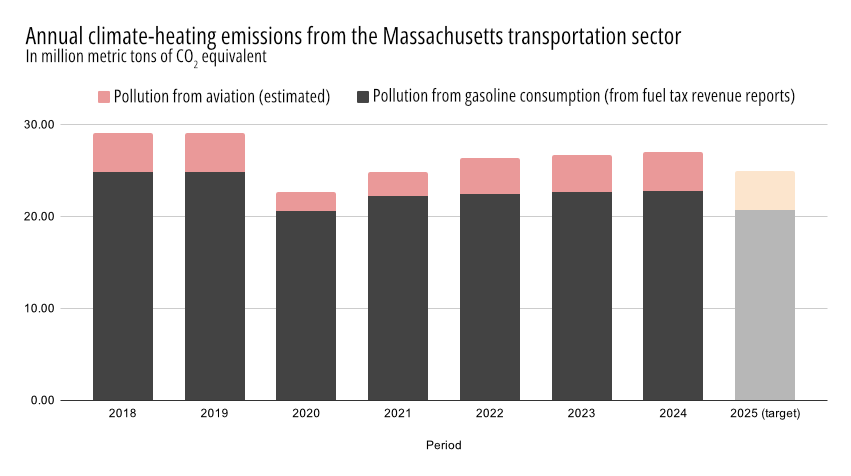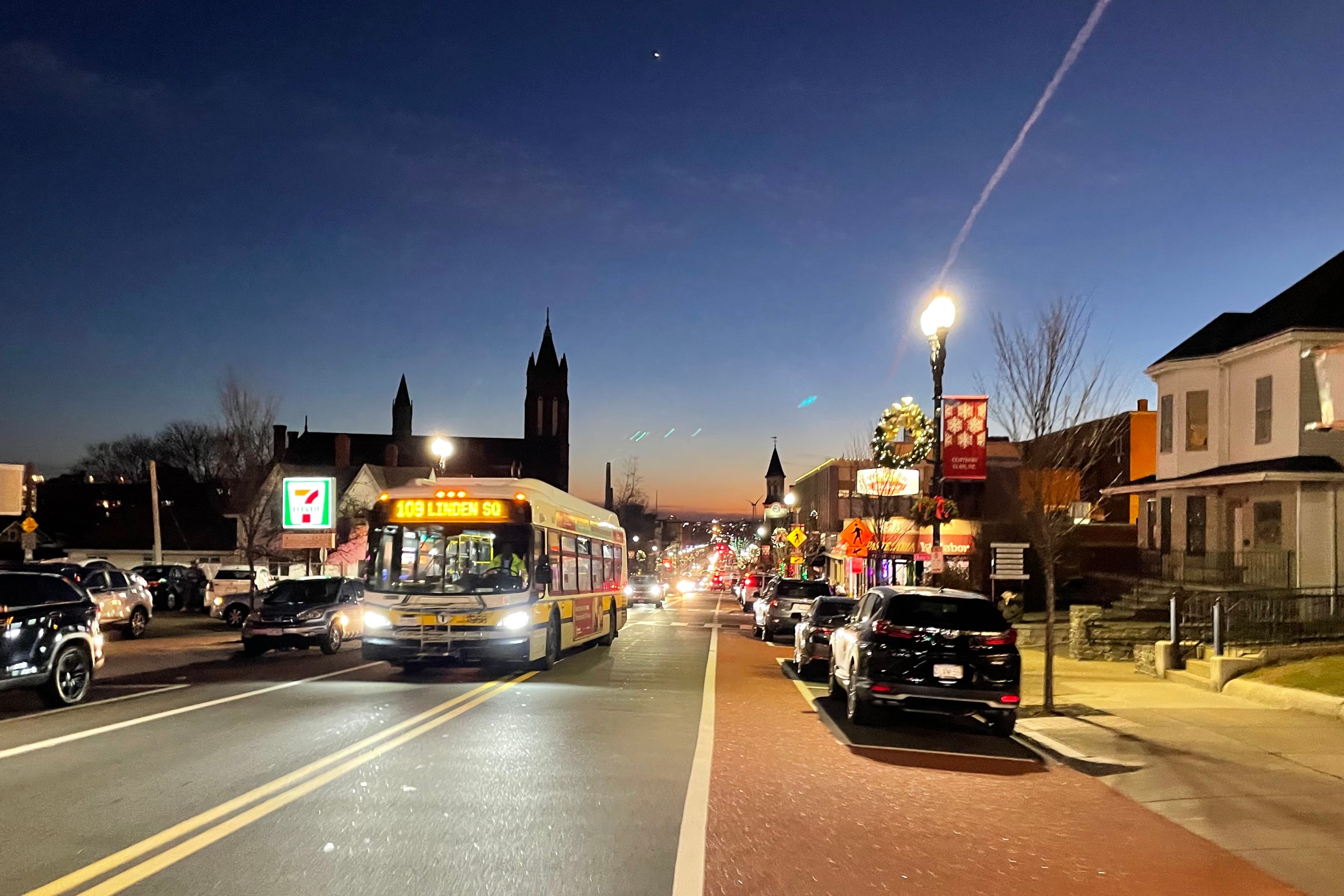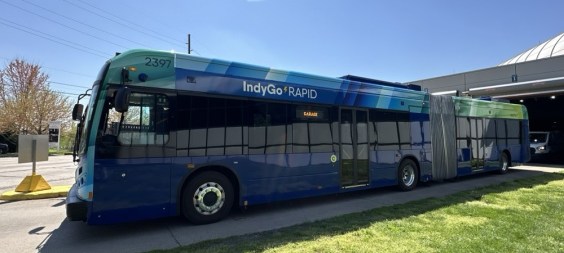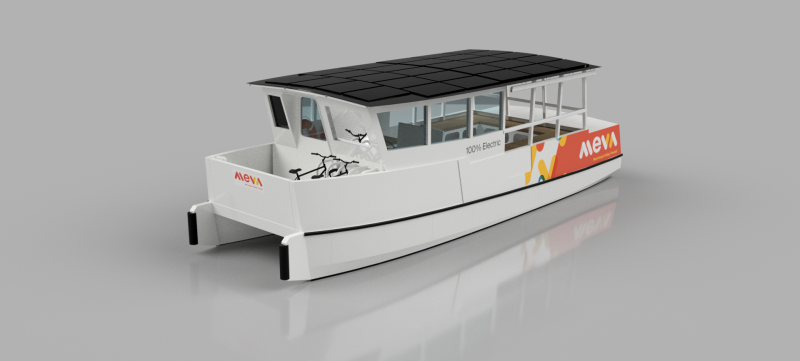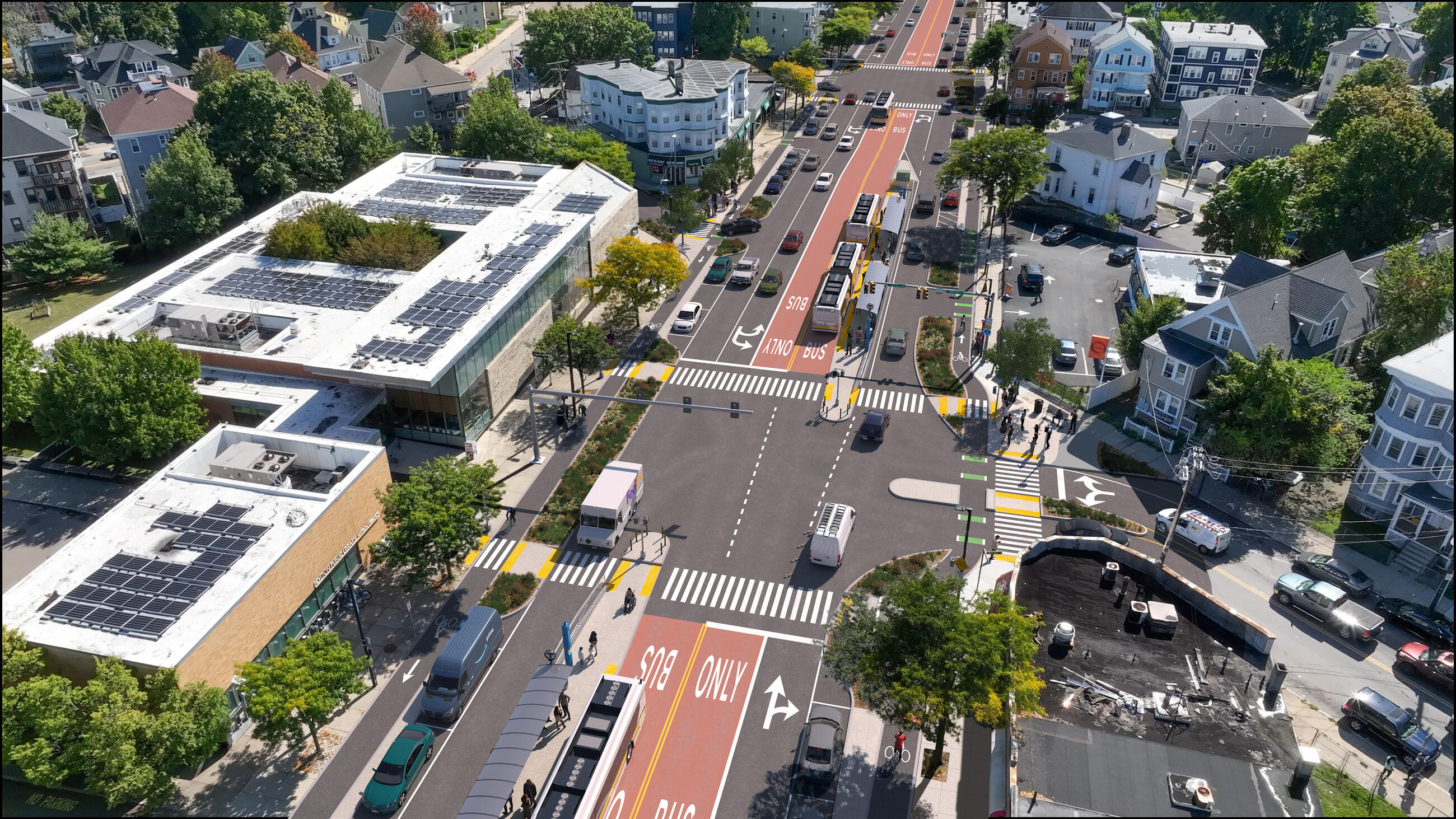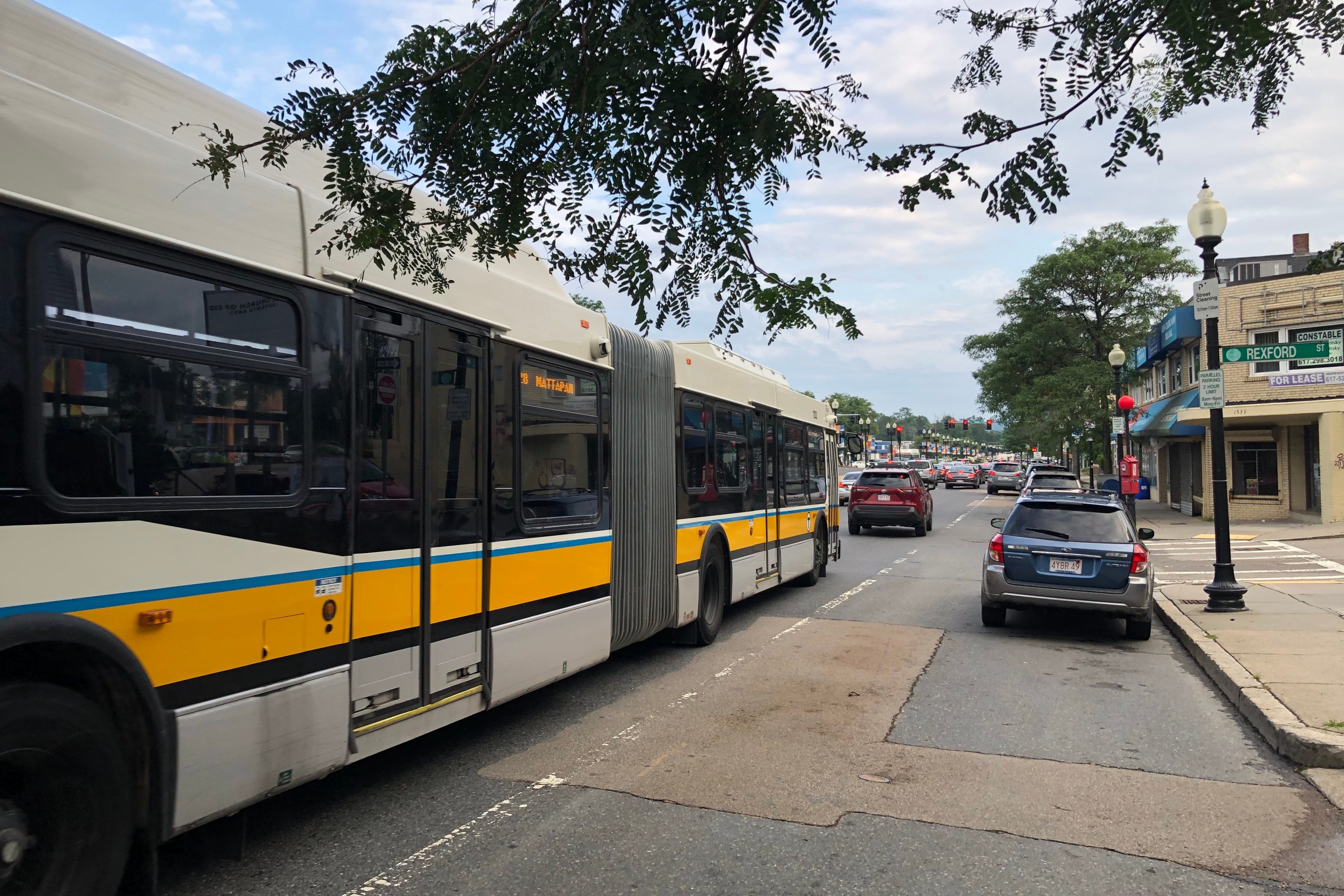Massachusetts drivers burned over 2.5 billion gallons of gasoline in 2024 – an 11 million gallon increase over last year's figure, and an unnerving sign that Governor Healey's transportation policies are undermining her administration's climate goals.
2024 represented the fourth consecutive year of increasing gasoline consumption in Massachusetts, according to fuel tax collection data from the Massachusetts Dept. of Revenue.
By incinerating 2.5 billion gallons of gasoline last year, Massachusetts drivers sent 22.8 million metric tons of planet-heating gases into the Earth's atmosphere.
The Commonwealth's official climate plan calls for reducing greenhouse gas emissions from the entire transportation sector to 24.9 million metric tons by 2025. But with an additional 4 million metric tons of pollution coming from the aviation sector (see chart above), the state is very unlikely to meet that target next year without another major economic disruption.
Fuel tax collection data warn of rising emissions
Streetsblog calculated these figures from the Department of Revenue's Blue Book reports, which provide detailed information about monthly collections from the state's fuel tax.
Those reports show that Massachusetts collected $615.1 million in fuel taxes in calendar year 2024.
At a tax rate of 24 cents per gallon, that implies that Massachusetts drivers bought and burned 2.56 billion gallons of gasoline last year.
When that gasoline is burned in internal combustion engines, its carbon combines with oxygen to create climate-heating carbon dioxide: 8.89 kilograms of carbon dioxide per gallon, according to the Environmental Protection Agency.
So the 2.55 billion gallons of gasoline that Massachusetts drivers consumed in 2024 generated 22.78 million metric tons of climate-heating greenhouse gases.
Transportation an increasingly large obstacle to the Commonwealth's climate goals
The Healey administration hasn't updated is greenhouse gas emissions data since 2021, but based on the data that is available, gasoline accounts for at least one-third of the climate-heating emissions from the entire Massachusetts economy – and that share is probably growing.
After years of focused regulation on the electric power sector that shut down fossil-fueled power plants and expanded renewable electricity production, gasoline has emerged as the biggest remaining source of greenhouse gas pollution in Massachusetts.
But while the state government set strict, enforceable policies to reduce fossil fuel consumption in other sectors – with clean energy mandates for the electric power sector, for instance, and stricter building codes in the construction sector – politicians have so far shown little interest in regulating highway agencies like MassDOT, whose highways are the biggest remaining source of air pollution in the Commonwealth.
The state government continues to spend billions of dollars on highway megaprojects while under-investing in public transit.
Instead, the state's politicians have so far opted to outsource the transportation pollution problem to consumers, by asking households to buy new electric cars.
But, as reflected in the gasoline data discussed above, that strategy hasn't been very effective. The state's climate plan had set a target of 200,000 electric vehicles by 2025, but as of January 1, there were 89,257 purely electric vehicles on the road in Massachusetts.
